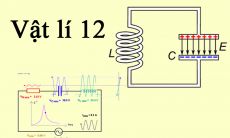Đề thi HK1 môn Tiếng Anh 10 năm 2021-2022
Trường THPT Trưng Vương
-
Read the passage and choose the best answer
FOOD AROUND THE WORLD
It isn't amazing how much time we spend talking about food? "Have you ever eaten ...?", "What do you have for lunch?" and so on. And yet, when you travel from one county to another, you find that people have quite different feelings about food. People often feel that what they eat is normal, and what other people eat is strange and silly. In most parts of Asia, for example, no meal is complete without rice. In England, people eat potatoes every day. In the Middle East, bread is the main part of every meal. Eating becomes a habit which is difficult to change. Americans like to drink a lot of orange juice and coffee. The English drink tea four or five times a day. Australians drink large amounts of beer and the French drink wine every day.
The sorts of meat people like to eat also differ from one country to another. Horse meat is thought to be delicious in France. In Hong Kong, some people enjoy eating snakes. New Zealanders eat sheep, but never eat goat meat. The Japanese don’t like to eat sheep meat because of its smell, but they enjoy eating raw fish. So it seems that although eating is a topic that we can talk about for hours, there is a little common sense in what we say about it. People everywhere enjoy what they have always eaten, and there is very little we can do to change our eating habit.
Câu 1:
What is the main idea of the text?
A. People have the same feelings about food.
B. People think about food differently.
C. People think that no meal is perfect without rice.
D. People are interested in fruits.
-
Câu 2:
According to the writer, where is bread the main food?
A. In Asia
B. In Japan
C. In Middle East
D. In Australia
-
Câu 3:
Which of these people drink wine every day?
A. Americans
B. England
C. Australians
D. The French
-
Câu 4:
Why are the Japanese not interested in sheep meat?
A. They don't like its smell.
B. It tastes bad.
C. Horse meat and goat meat are popular.
D. All are correct
-
Câu 5:
In which country do people often drink beer?
A. France
B. Australia
C. England
D. Singapore
-
Câu 6:
Which is popular food in Japan?
A. Dog
B. Horse meat
C. Goat meat
D. Fish
-
Câu 7:
How does the writer conclude about our eating habit?
A. Our eating habit is difficult to change.
B. People everywhere enjoy eating new food.
C. We can change our eating habit easily.
D. All are correct.
-
Choose A, B, C, or D that best completes each unfinished sentence
Câu 8:
People tend to live in ………… family which consist of parents and children.
A. blended
B. nuclear
C. extended
D. single-parent
-
Câu 9:
“Who ......................?” “.................... to get through to Misaki”
A. do you phone/ I’m trying
B. are you phoning/ I try
C. are you phoning/ I’m trying
D. do you phone/ / I try
-
Câu 10:
I ……………….one of my special desserts for dinner, if you like.
A. make
B. am going to make
C. will make
D. am making
-
Câu 11:
The next train to Dublin …………. at 4:45. (station announcement)
A. will leave
B. is leaving
C. is going to to leave
D. leaves
-
Câu 12:
Mark is _________ with the volunteer work in this charity organization. He is not very ________ about getting a paid job next time.
A. disappointed/ hopeful
B. disappointed/ hopeless
C. disappointing/ hopefulness
D. disappointing/ hopes
-
Câu 13:
It is__________that controls all the organs in the body.
A. heart
B. brain
C. spine
D. nerves
-
Câu 14:
__________ takes place when the female provides the main source of income for the family.
A. Breadwinner Mom
B. Breadwinner Dad
C. Breadwinner
D. Breadwinner male
-
Câu 15:
The ____________ system is to process the nutrients absorbed from the small intestine.
A. Respiratory
B. Circulatory
C. Digestive
D. Skeletal
-
Câu 16:
Students should have their eyes ____________ regularly.
A. tested
B. to test
C. test
D. testing
-
Câu 17:
_______ of your brothers and sisters do you feel closer to?
A. Who
B. What
C. Whose
D. Which
-
Câu 18:
We met in an ancient building, ______ underground room had been converted into a chapel.
A. that
B. whose
C. whom
D. which
-
Câu 19:
I’m going to meet a woman with _______ I used to study.
A. who
B. whose
C. whom
D. that
-
Câu 20:
_______ are they doing that for? Please tell me.
A. Whom
B. That
C. What
D. Why
-
Câu 21:
My older sister was just getting into the kitchen _______ the receiver rang.
A. when
B. where
C. what
D. which
-
Câu 22:
There is no reason _______ they shouldn't be free.
A. that
B. what
C. why
D. when
-
Câu 23:
Her uncle lived in Barcelona for several years, _______ he taught Spanish.
A. when
B. where
C. which
D. that
-
Read the following passage carefully, and then select the best option A, B, C or D to complete it
Special Education, specially designed instruction to (24) _______ the unique needs and abilities of disabled or gifted children. Disabled children have conditions (25) _______ adversely affect their progress in conventional education programs. Gifted children, who demonstrate high capacity in intellectual, (26) _______, or artistic areas, may also fare poorly in regular education programs. Special education services can help both disabled and (27) _______ children make progress in education programs. Most children served by special education programs are (28) _______ the ages of 6 and 17.
In the United States, federal law requires states to identify and serve all children (29) _______ disabilities. Public education and health officials in the United States identified approximately 5.4 million infants, toddlers, (30) _______, and youth as disabled in 1994. That same year, the U.S. Department of Education reported that 12.2 percent of all children (31) _______ the age of 21 received some form of special education. The most frequently reported disabilities are speech or language impairments; mental retardation and (32) _______ developmental disorders; serious emotional disturbance; and specific learning disorders, (33) _______ memory disorders. Other disabilities include hearing, visual, or orthopedic impairments; autism; (34) _______ traumatic brain injury. An increasing number of children in the United States are identified as having attention-deficit hyperactivity disorder (ADHD) and (35) _______ special education services.
Many schools in the United States provide special education services (36) _______ gifted children, although federal law does not mandate these services. Gifted children demonstrate (37) _______ high abilities in intellectual, creative, academic, leadership, or artistic areas. Estimates of the gifted (38) _______ in the United States range from 3 to 15 percent of all schoolchildren.
Câu 24:
(24) _______
A. meet
B. see
C. have
D. find
-
Câu 25:
(25) _______
A. what
B. that
C. whom
D. this
-
Câu 26:
(26) _______
A. create
B. creation
C. creative
D. creature
-
Câu 27:
(27) _______
A. poor
B. rich
C. learned
D. gifted
-
Câu 28:
(28) _______
A. among
B. between
C. in
D. inside
-
Câu 29:
(29) _______
A. with
B. by
C. for
D. of
-
Câu 30:
(30) _______
A. men
B. women
C. children
D. adults
-
Câu 31:
(31) _______
A. at
B. on
C. to
D. over
-
Câu 32:
(32) _______
A. another
B. other
C. each other
D. together
-
Câu 33:
(33) _______
A. as
B. like
C. for instance
D. such as
-
Câu 34:
(34) _______
A. and
B. but
C. or
D. so
-
Câu 35:
(35) _______
A. have
B. give
C. throw
D. receive
-
Câu 36:
(36) _______
A. for
B. with
C. by
D. to
-
Câu 37:
(37) _______
A. except
B. exception
C. exceptional
D. exceptionally
-
Câu 38:
(38) _______
A. people
B. peoples
C. population
D. communities
-
Choose the word whose main stress is placed differently from the others in each group
Câu 39:
Choose the word whose main stress is placed differently from the others in each group: education, specialty, opposition, demonstration
A. education
B. specialty
C. opposition
D. demonstration
-
Câu 40:
Choose the word whose main stress is placed differently from the others in each group: special, mental, fourteen, within
A. special
B. mental
C. fourteen
D. quickly














